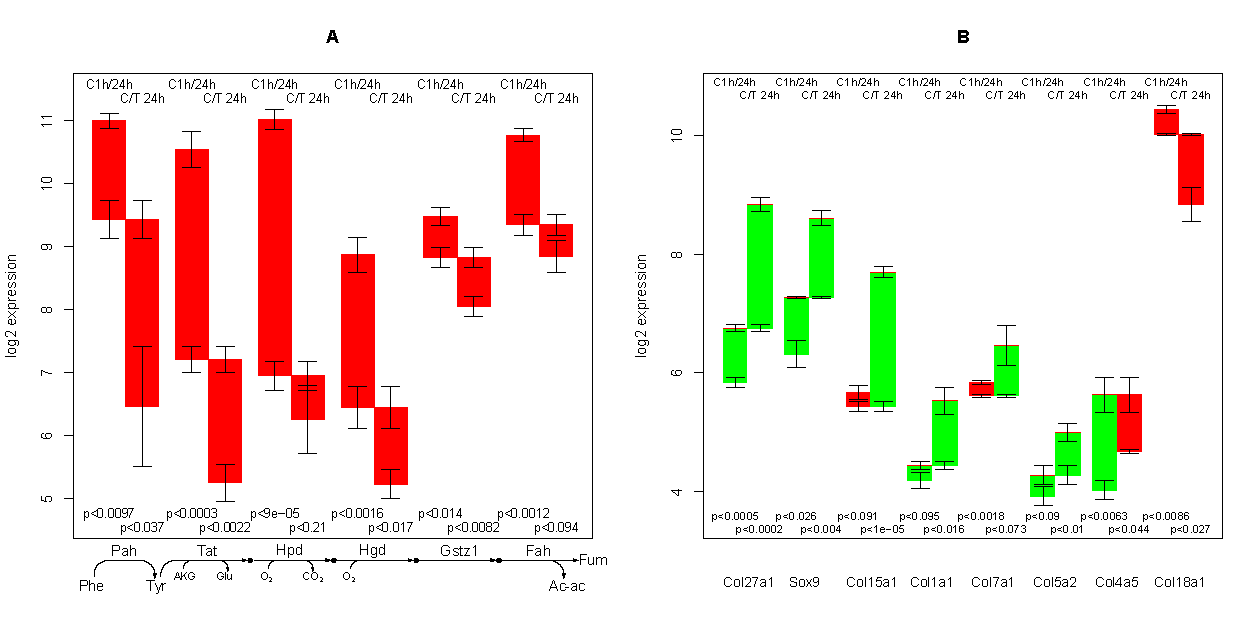TGFβ on hepatocytes
TGFβ signaling plays a major role in the reorganization of liver tissue upon injury and is an important driver of chronic liver disease. This is achieved by a deep impact on a cohort of cellular functions. To comprehensively assess the full range of affected- TGFβ multiplies down-regulation of most metabolic functions occurring in culture stressed controls.
- This is especially pronounced for tyrosine degradation, urea synthesis, glucuronization capacity, and cholesterol synthesis.
- Ethanol degradation and creatine synthesis are down-regulated only in TGFβ treated hepatocytes, but not in the control.
- Among the few TGFβ dependently up-regulated functions, synthesis of various collagens is most pronounced.
- Further interesting findings include: down-regulation of glucose export is postponed by TGFβ, TGFβ up-regulates the synthesis capacity of ketone bodies only as an early response, TGFβ suppresses the strong up-regulation of Vanin, and TGFβ induces re-formation of ceramides and sphingomyelin.

(A) Regulation of the degradation cascade of phenylalanine and tyrosine;
(B)
Regulation of selected collagens and a promoter.
Red bars indicate down-regulation and green bars indicate up-regulation.
Either 2 time points in the control experiment (e.g., C1h/24 h) or the same time point of control vs. TGFβ treated sample (e.g., C/T 24 h) are compared.
Error bars indicate average standard deviation of 3 independent experiments.
P-values refer to the probability that there is equal expression of two respective probe values, as determined with the Welch's t test
|
The results of the ModeScore analysis has been published [1], see also [this poster].


 dr-andreas-hoppe.de
dr-andreas-hoppe.de